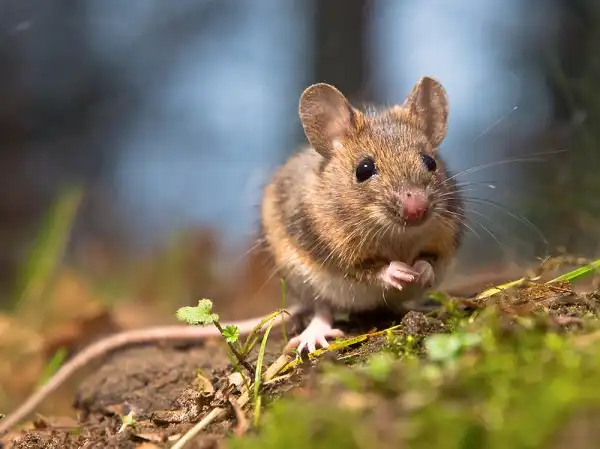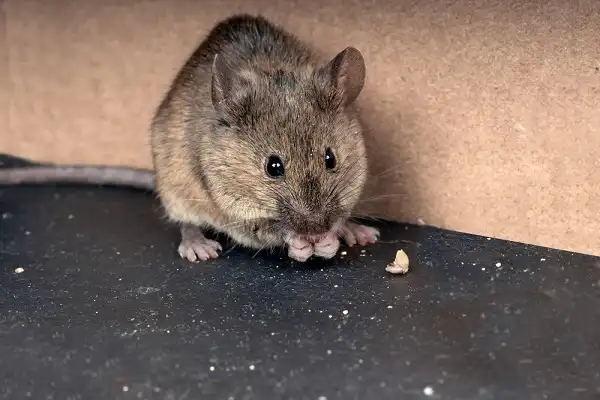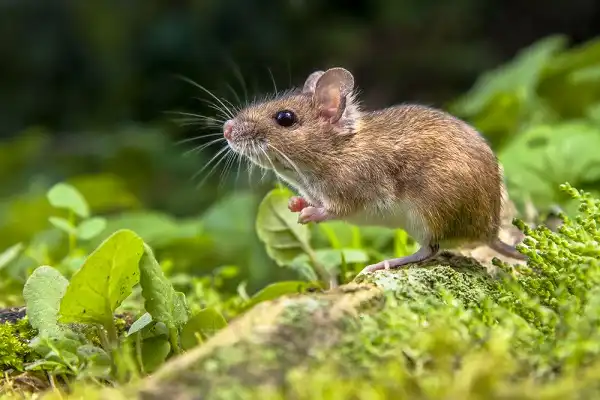Are you looking for a furry companion to brighten up your home? A mouse creature may just be the perfect pet for you! These unique and fascinating animals are known for their intelligence, playfulness, and endearing personalities. Not only do they make great companions, but they also require relatively little upkeep — making them one of the most low-maintenance pets around. So, if you’re in search of an interesting addition to your family with plenty of charm, then look no further than a mouse creature! In this blog post, we’ll discuss all there is to know about these delightful creatures so that you can decide whether or not they would make the right fit for your lifestyle.

Mouse Description
Mouse creatures are small, social animals that can often be found in large groups. They have long, slender bodies and pointed faces with two large ears protruding from either side. Mouse creatures come in an array of colors, including black, white, gray, tan, and brown.
Mouse Habitat
Mouse creatures are native to many regions of the world, from temperate forests to deserts. They have also adapted well to human environments, making them popular house pets. In the wild, mouse creatures build elaborate underground burrows that can house dozens of individuals. These burrows are equipped with multiple entrances and exits, as well as separate chambers for sleeping, food storage, and even toilets. When kept as pets, it’s important to provide mouse creatures with a suitable habitat. A large, well-ventilated cage with plenty of room to move around is a must.
A solid floor or bedding that’s changed frequently is also necessary to keep their environment clean and hygienic. Mouse creatures are active and curious animals, so providing them with toys, tunnels, and exercise wheels to play with will keep them stimulated and happy. In addition to their engaging personalities, mouse creatures are also low-maintenance pets. They typically eat a diet of commercial mouse food, supplemented with fresh fruits and vegetables. Fresh water should always be available in a water bottle or dish, and their cage should be cleaned regularly to prevent odors and bacteria buildup.
Mouse Diet
Mouse creatures are omnivores and feed on a variety of foods, including grains, fruits, vegetables, insects, and other small animals. In captivity, they typically eat commercial mouse food as their main source of nutrition. This should be supplemented with fresh fruits and vegetables like apples, carrots, bananas, and sweet potatoes to provide them with additional vitamins and minerals. It’s important to monitor the amount of food they consume since these creatures have an especially high metabolism and can quickly become obese if overfed. In addition to providing food for your pet mouse creature, it’s also important to give them access to fresh water at all times. Water bottles or dishes that hang outside the cage work best for this purpose — although bowls can be used, be sure to check them frequently for contamination. Overall, a balanced diet is essential for the health and happiness of your mouse creature. Make sure to provide them with plenty of food and water, as well as variety in their meals, so that they can lead long and healthy lives.
Mouse Size
The size of mouse creatures varies depending on the species, but most are relatively small when compared to other animals. Adult mice typically range from 1-7 inches in length and weigh between 0.25-1 ounce, with some larger varieties reaching up to 2 ounces. In comparison, an average adult house cat can weigh between 8-10 pounds — making mouse creatures one of the smallest domesticated pets available. Due to their tiny size, it’s important to provide a suitable habitat for your pet mouse creature that is both safe and comfortable. A cage should be at least twice as long as the animal’s body length and should contain multiple levels or hideouts where they can explore and play without fear of becoming injured. Additionally, bedding should be provided on the bottom of the cage to provide a soft surface for them to sleep and play on.

Mouse Lifespan
The lifespan of a mouse creature varies depending on the species, but most can live up to 3-4 years with proper care. The oldest known mouse creature lived to be 8 years old, though this is rare. In order to give your pet mouse creature a long and healthy life, it’s important to provide them with plenty of good nutrition and exercise. A balanced diet should include fresh fruits and vegetables, proteins such as cooked eggs or lean beef, and small amounts of high-quality pellets or seeds. Avoid giving too much sugar or processed foods as these can cause health issues in mice. Providing the right habitat and regular exercise is also key to a long and healthy life for your pet mouse creature. Make sure their cage is spacious enough for them to move around, with plenty of stimulating toys and hiding spots where they can relax.
Mouse Behavior
Mouse creatures are naturally curious and intelligent animals, and make wonderful pets with proper care. They are quite active and love to explore — often running on their exercise wheels for hours at a time. When playing, they may squeak or chatter as a way of communicating excitement or happiness. Mice are also social animals, preferring to live in pairs or small groups rather than alone. However, males should be neutered before being introduced together as they will fight otherwise. It’s best to keep the same gender together when introducing multiple mice into the same cage.
Mouse Speed
Mouse creatures are incredibly fast — capable of running up to 8 miles per hour! This speed helps them to quickly escape predators in the wild, but can also make it difficult for pet owners to handle their pets. To help keep your mouse creature safe and secure, it’s important to provide a proper habitat that is large enough for them to move around without feeling too confined. Additionally, gloves or other protective clothing should be worn when handling mice as they can bite if they feel threatened or scared. Overall, mouse creatures are fast little critters that require careful handling and lots of love! With the right care and attention, these active animals can live long and happy lives. So if you’re looking for an interactive companion with plenty of personalities, a mouse creature may be the perfect fit!

Mouse Hunting
In the wild, mouse creatures are expert hunters — capable of finding food sources in hard-to-reach places. This helps them survive in their natural habitats and can make for some interesting viewing when kept as pets. When hunting, mice rely on their senses of smell, sight, touch, and hearing. They also use their whiskers to navigate dark spaces and search for prey. In captivity, you can encourage this behavior by providing your pet mouse creature with plenty of stimulating toys such as balls or blocks to explore and hide in. Overall, mouse creatures are fascinating little critters with lots of personalities! With the right care and attention, they can live long and happy lives as loyal companions. So if you’re thinking about getting a pet, consider adding a mouse creature to your home — they make great pets!
Mouse Care
Due to their small size and social nature, mouse creatures require special care when kept as pets. They should always be housed in a large cage with plenty of space to move around and explore. The cage should also be equipped with multiple levels or hideouts so that they can climb and play safely. Bedding should be provided on the bottom of the cage — avoid using any materials that may cause irritation or respiratory issues. Additionally, it’s important to provide toys and exercise wheels for your mouse creature so that it can stay active and entertained. In addition to providing suitable habitat, it’s also essential to keep the area clean and hygienic. Cage liners should be changed regularly to prevent odors and the buildup of bacteria. Periodically check for loose wires or nails that may cause injury or discomfort; these should be removed immediately if found.
Mouse Life Cycle and Reproduction
In the wild, mouse creatures are able to reproduce quickly and give birth to a litter of pups every few weeks. In captivity, however, these reproductive cycles can be delayed or disrupted depending on certain factors such as temperature and nutrition. When in their natural habitat, mouse creatures typically reach sexual maturity between 4-6 weeks old — after which they can begin reproducing with other individuals. During this time, female mice will attract males with pheromones in order to mate. After mating has occurred, the gestation period for a mouse creature is approximately 20 days—after which the mother will give birth to a litter of 2-10 pups. At birth, baby mice are blind and hairless — they depend on their mother’s milk for nourishment. After two weeks, they are able to open their eyes and begin wandering around in search of food. At this point, the mother will wean them off her milk and encourage them to explore the area independently. At four weeks old, young mice will be ready to leave their mother and venture out into the world on their own. They can now feed and groom themselves and may even start looking for a mate of their own.

Conclusion
Overall, mouse creatures make wonderful pets that require relatively little maintenance. With the right care and attention, these active and curious animals can live long and healthy lives. They are also intelligent and social creatures that love to explore — making them an ideal choice for those looking for an interactive companion with plenty of personalities. So if you’re thinking about getting a pet, consider adding a mouse creature to your family — they make great pets!
Frequently Asked Question

